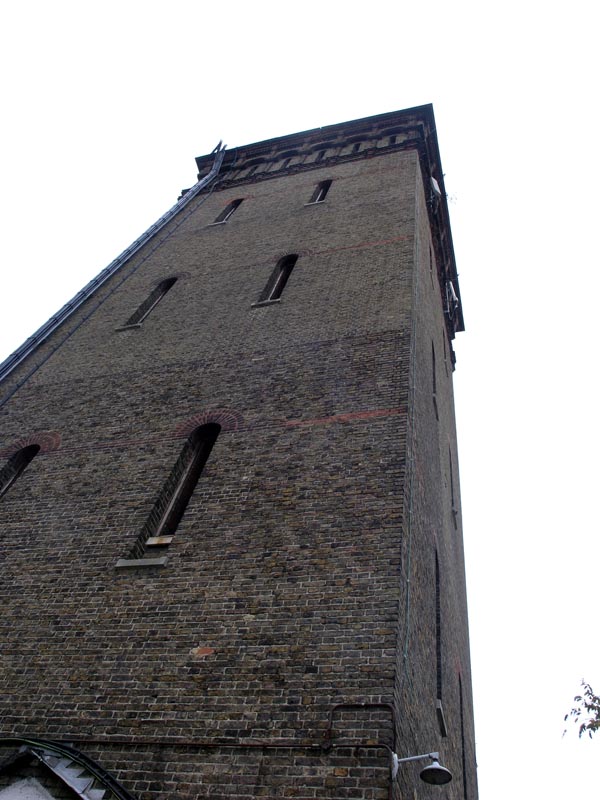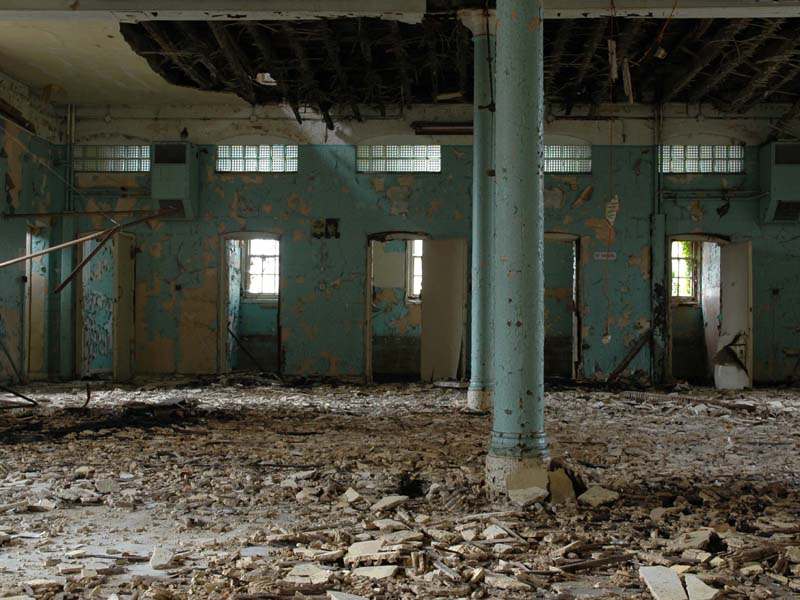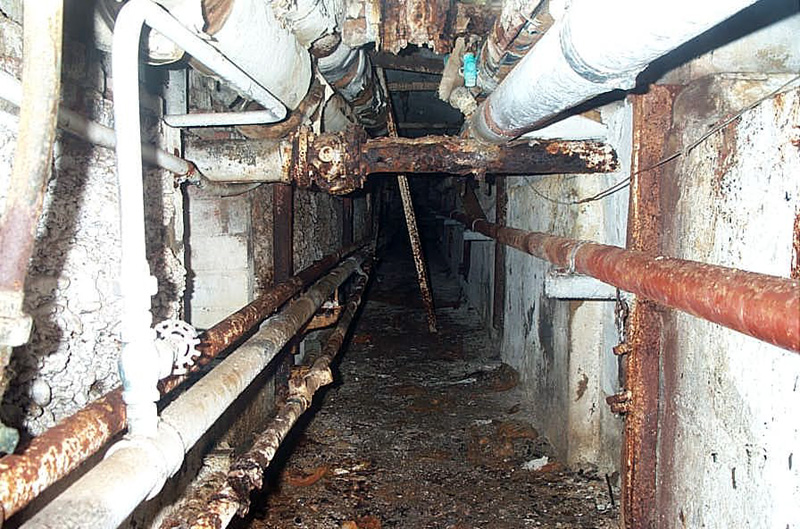|

"There wasn’t a lot to do at Cane Hill during the mid 60s, especially in the evenings. TV programmes ended at 11.00pm
(and were in black and white until 1967). Students who ‘lived in’ only received £16.00 per month salary, so even trips to
the cinema at Croydon were rationed." "Beer only cost between 1 shilling and sixpence and two shillings (7.5p – 10p) a pint, so we would
make our way to the Red Lion in Coulsdon for a pint or three. However, as pubs had this annoying habit of throwing you
out just as you were starting to enjoy the evening the question remained … what to do next?" "Hunting cockroaches in the old coal store might keep us amused for a while. The technique was to enter the
store in darkness, shine a torch on the floor and then stamp on as many as possible before they could reach the safety of
the coal piles. As you might have guessed, our social life was pretty constrained for this to seem like ‘entertainment’." "Soon we would move on to the main event … the Water Tower. It stood massively in the corner of the service yard,
towering over every other building. What a challenge! There were probably no more than six of us who were fascinated by the tower
and I can’t remember that we had any trouble gaining access to it. The lock was probably the same as those to wards and so our
master keys would have got us in. (Side note: the large iron key issued to each member of staff was the ‘open sesame’ to all
the original brass locks within the hospital. Lose one and the fine was £5.00 … more than a weeks’ money to a student nurse!)" "Once inside we had to make our way through all the clutter of stuff that had been stored or abandoned in the lower
floors; upwards in the dark (or, at the most, with shaded torches as climbing the water tower was strictly forbidden). As far as
I can recall the first two or three floors had old wooden stairs attached to the walls; then there were rusty iron rung ladders.
Finally you came to the bottom of the immense water tank at the top of the tower. Here it became a bit of a squeeze. Iron rungs were
set diagonally into the corner where two walls met. You now had to make your way up this confined vertical space till you reached the
top of the tank … now things started to get a tad dodgy. A rather springy plank took you across the middle of the tank to a metal ladder
that hung down from the roof hatch. So, very cautiously, we made our way over the thousands of gallons of water that lay a few feet below us;
thankfully grabbed the ladder and rapidly made our way up through the hatch onto the flat roof. "Now the whole hospital lay spread out below and beyond, the lights of the suburban sprawl that had
followed the A23 London to Brighton road out as far as Coulsdon. I would have loved to have seen the daytime view from the top
of the water tower. However, we never dared to risk the climb during the day when people might see us. There wasn’t a lot to do
once you had reached the top – most of the fun was in getting there. We would sit on the lowish parapet and, after a cigarette or two,
inevitably would start to feel the pressure of the pints of beer consumed earlier. Men; top of a tower; full bladder … it had to be a
peeing contest. Who could manage the greatest range? An hilarious (to us at least) by-product of this was that one summers’ day the
Fire Officer was heard to say … “Strange, I’m sure I heard rain on the roof last night”. Perhaps it wasn’t as strange as he thought – he
had a house near the foot of the tower!" 
"Our explorations of Cane Hill took us to one of the wards that had been closed due to the reduction
in patient numbers. In its heyday Cane Hill had beds for 2000 patients but, by the mid sixties, this had dropped to
around 1600. It’s hard to remember after 40 years but I think it was York that was one of the abandoned wards that
we visited a few times. It was certainly one of the ‘back’ wards and I recall it as not being far from the Tailor’s workrooms." "Apart from the junk that had been stored in parts of the ward since its closure. It was much as it had been whenever
it had ceased to be occupied. We even came across some old patient’s notes which gave us an insight into attitudes and treatments
going back to the turn of the 20th century." "Large areas were completely clear and, having found a few old wheelchairs, we soon set up a course
for the ‘Wheelchair Grand Prix’. I blame my size (6’2” and 16 stone) on the fact that I never managed to win … but it
was great fun careering around an eerily empty ward at breakneck speed." "It was almost as much fun as ‘stretcher trolley racing’ (‘gurneys’ to Americans). This used to take
place at night in the empty corridors of the hospital. Some of the corridors had enough slope on them to ensure a fair
turn of speed. It’s a shame there was no steering and crashing into a wall was the only way to stop. The noise was likely
to alert the Night Superintendent so a hasty retreat usually followed!" "Back on the empty ward we started to examine the cupboards and, to our great surprise, came across some remnants
of old ‘Lunatic Attendant’ uniforms. There were peaked caps and sturdy leather belts with long key chains attached. There were
even whistles, which we can only assume were used to call for help in the event of being attacked! All in all these were
chilling reminders of a not so distant past when patients had been herded around like criminals. None of us felt it appropriate
to take any of these, somewhat gruesome, items as souvenirs … we just put them back and locked the cupboards behind us." 
"Back in the 1960s the service tunnels were a fascinating prospect for nocturnal exploration. They were ‘alive’ back then … steam,
electricity, gas and telephone services were all fed through the extensive network of tunnels. Walking in a cramped, stooped
position alongside (and under) hissing steam pipes made for a somewhat un-nerving experience. However, the tunnels were a constant
source of attraction and just had to be traveled (a sentiment that I am sure will resonate with present-day urbex members)." "The system extended, literally, for miles with many side turnings and frequent twists and turns. Whilst the main system
more or less followed the corridors, all too often we would find ourselves completely lost, searching for a hatch or ladder that would
take us back up before our torches ran out. On one such occasion I cautiously lifted a hatch, only to find that we were right outside
the open door to the Night Matron’s office – I could even see her feet under the desk. Needless to say I gently lowered the hatch and
we quietly made our retreat. Another time we finally managed to climb through a grating to the outside. Much to our chagrin we found
ourselves in an enclosed courtyard … and none of us had brought a pass key. The only way out was up a drainpipe and over the (fortunately
single storey) roof of the corridor. Ray

|